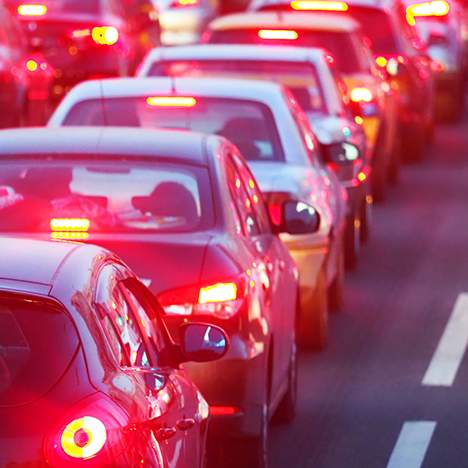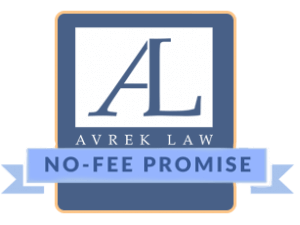Aggressive Driving Causes Crashes
Aggressive drivers are common on any road, and notorious for causing accidents. To better understand the hazard of aggressive driving accidents, here’s an example: Imagine that someone is changing lanes without signaling and almost crashes into you.
As the driver, we can react in a variety of ways: we can choose to take a breath and think “I must have patience” and continue on our way, or we can repeatedly yell, insult, lower the window, and make obscene gestures.
The latter reaction would be an example of aggressive driving, and could lead to an accident, but would not necessarily be considered road rage. This is important to note because many people seem to confuse aggressive driving with road rage.
Incidents due to aggressive driving are increasing every year, forcing countless injured individuals to seek out the best law firms for car accidents in their area. If you’ve been injured in an auto-related accident due to the aggressive actions of another driver, Avrek Law may be able to help.
What is Aggressive Driving?
Frequently associated with anger, it’s not difficult to see why aggressive driving causes crashes – California roads are dangerous enough without angry drivers in the mix.
Aggressive driving may be caused by increasingly long commutes to work, traffic congestion, and the behavior of other drivers. It can also be caused by mood, and the inability to cope with stress on and off the road.
Aggressive driving behavior includes:
- Speeding
- Honking
- Tailgating
- Running red lights
- Failing to obey stop signs
- Passing illegally
- Failing to yield right of way
- Erratic and unsafe lane changes
- Ignore signals from other drivers
Although any of these actions might contribute to an accident, and might help determine fault in the event of a crash, aggressive driving accidents should not be confused with road rage.
Honking the horn in the middle of traffic or making insulting gestures may be examples of aggressive driving, but on their own they are not illegal actions. Road rage is a criminal act in which a driver attempts to intentionally injure or kill another driver, passenger, or pedestrian.
Can Speeding Cause Accidents?
 Speeding is one of the most common causes that influence the occurrence of traffic accidents and remains a serious safety issue nationwide. The GHSA reported that 1/3 of all traffic fatalities are speed-related, costing Americans $40 billion per year.
Speeding is one of the most common causes that influence the occurrence of traffic accidents and remains a serious safety issue nationwide. The GHSA reported that 1/3 of all traffic fatalities are speed-related, costing Americans $40 billion per year.
Speeding is one of the biggest road safety problems and is only getting worse. Between 40-50% of motorists drive faster than the recommended speed limit, and between 10-20% exceed that limit by more than 10 mph.
Excess speed doubles the number of fatalities for every 100 accidents and causes more serious injuries. An increase of just one mile per hour on the average road causes an increase of 5% in injuries and 7% to fatal accidents.
Speeding reduces the time that a driver has to react to an unforeseen event, which would allow the individual to avoid an accident through some evasive action, such as braking.
By exceeding the speed limit for which the route was designed, aspects such as the stability of the vehicle and the driver’s visibility deteriorate, reducing the distance to where the road can be seen.
Road Rage and Aggressive Driving
As the driver, you can prevent aggressive driving (and road rage) by first adjusting your attitude. Forget the idea of “winning” on the road. Driving is not a race and it should not be a competition to see who finishes first.
Plan plenty of time for each trip, so if there is traffic or any other delay, you can keep calm. Think of the freeway as a conveyor belt: everyone will eventually reach their destination, so there is no need to drive at an excessive speed or to act rudely to save yourself a few minutes.
Put yourself in the other driver’s seat. Have you ever made a mistake along the way, gotten lost, or been unsure where to turn? Instead of getting angry with another driver who makes the same errors, give them the benefit of the doubt.
When you make mistakes, recognize them and indicate them with a nod or a wave of greeting to the drivers around you. Friendly behavior makes driving safer for everyone on the road.
Common Factors in Aggressive Driving Accidents
According to a study from AAA, over 55% of fatal crashes involve drivers who act aggressively behind the wheel. In addition, aggressive driving was also a factor in the majority of non-fatal accidents that caused serious injuries.
The most common aggressive driving actions that led to car accidents were:
- Careless and erratic driving
- Improper turns
- Distracted driving
- Improper passing
- Tailgating
- Speeding
- Failure to yield right of way
What Steps to Take After Being in a Car Accident
If you are injured in a car accident it’s very important to know what to do immediately afterwards. Depending on the severity of the crash, who’s at fault, and other potential factors, there are many scenarios.
Check out the articles below for more details on what you need to do after a crash:
14 Steps to Take After a Car Accident
What to Do After an Accident With an Uninsured Driver
What to Do After a Hit and Run Accident
Common Affected Parts of the Body: Why Aggressive Driving Causes Injuries
In automobile accidents caused by aggressive driving, some parts of the body that are most affected, depending on the severity of the accident, are often the cervical spine (due to whiplash) and the chest area.
The seat each passenger occupies in the vehicle can also greatly affect the injuries suffered. For example, the driver will be more prone to injuries such as fractured wrists, cervical injuries, thoracic and facial trauma. On the other hand, the front-seat passenger is more likely to suffer knee injuries due to direct impact with the dashboard, as well as cervical injuries.
Common injuries to different parts of the body are:
- Cervical Spine: Whiplash
- Upper Limbs: Wrist Fractures
- Lower Limbs: Knee Injuries
- Head Injury: Concussion
How Do I Stay Safe Near Aggressive Drivers?
If you encounter an aggressive driver, try to avoid them and keep your distance, as aggressive drivers often try to provoke other motorists.
When encountering an aggressive driver, you should keep the following tips in mind:
- Get out of their way and stay at a safe distance
- Make sure you and your passengers are wearing seat belts
- Do not try to challenge aggressive drivers
- Do not accelerate
- Ignore their gestures and comments
- Do not make gestures and comments that may provoke the aggressive driver
- Avoid making eye contact with them
- If you feel physically threatened, report the aggressive driver by calling 911
Why Do People Drive Aggressively?
Aggressive driving behavior is often triggered by a mixture of the temperament or personality of the individual, as well as factors of the environment surrounding them, such as:
- Overcrowded roads
- The perception of poor driving among other cars on the road
- Stress and aggression in unrelated areas of the driver’s life
- The consumption of alcohol or drugs
- Traffic jams or speed reduction zones
When to Call a Lawyer in the Aftermath of Aggressive Driving Accidents

Dealing with aggressive drivers can be an extremely stressful experience, especially for those who are not prepared to do so. There may be instances where you may feel the need to confront aggressive drivers, but it is best to stay at a distance and drive safely.
If you have suffered an injury due to an aggressive driver, it is highly recommended that you contact the best car accident law firm in your area. With more than 50 years of combined experience serving accident victims, Avrek Law has the skill and dedication to obtain the compensation our clients deserve.
Let our track record speak for itself: Avrek Law has recovered Over $2 Billion in over 45,000 cases – and we only take a fee if we win the case.
Ready to find out more? Contact Avrek Law today for a free legal consultation – we’re here to help!
